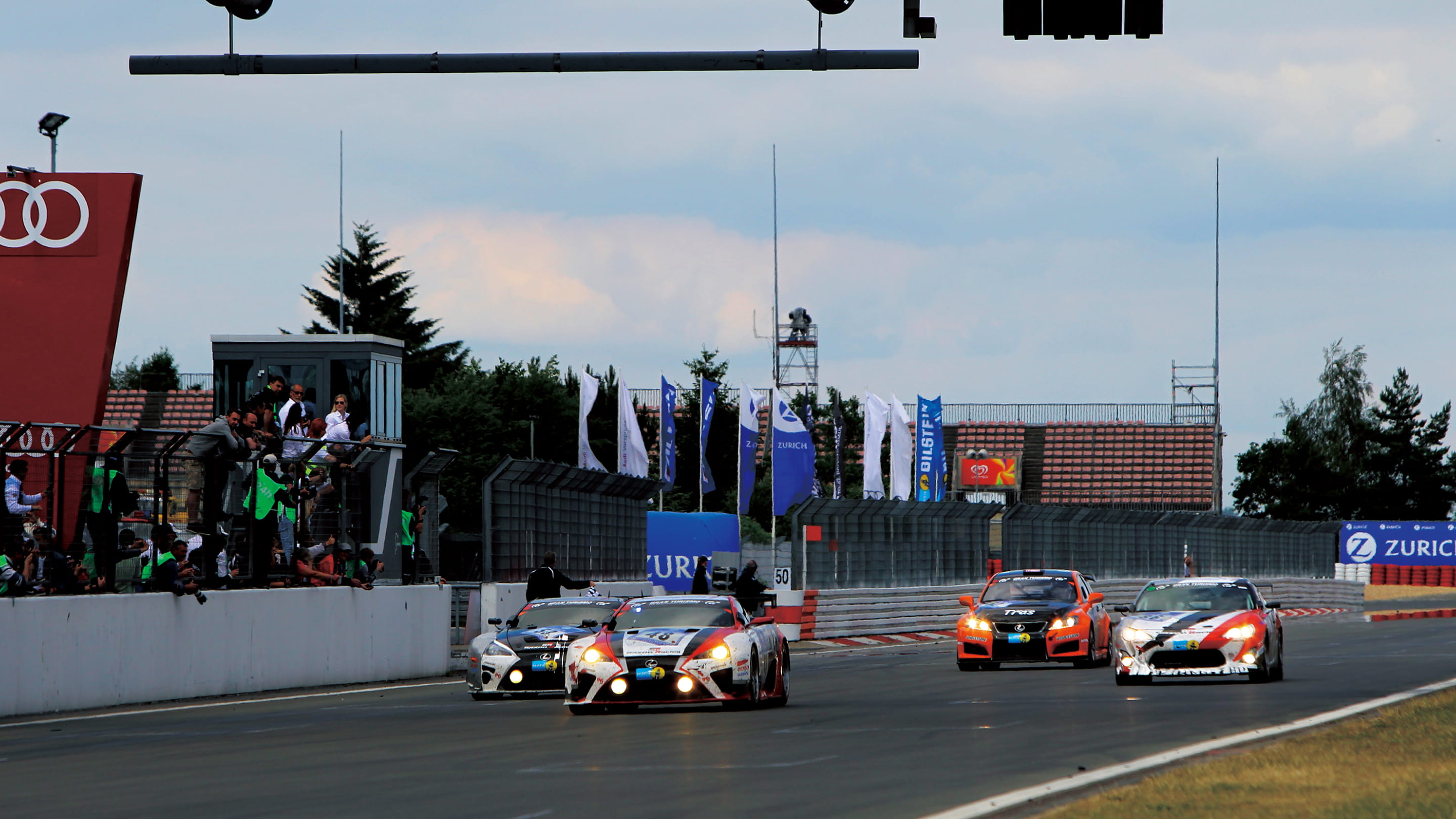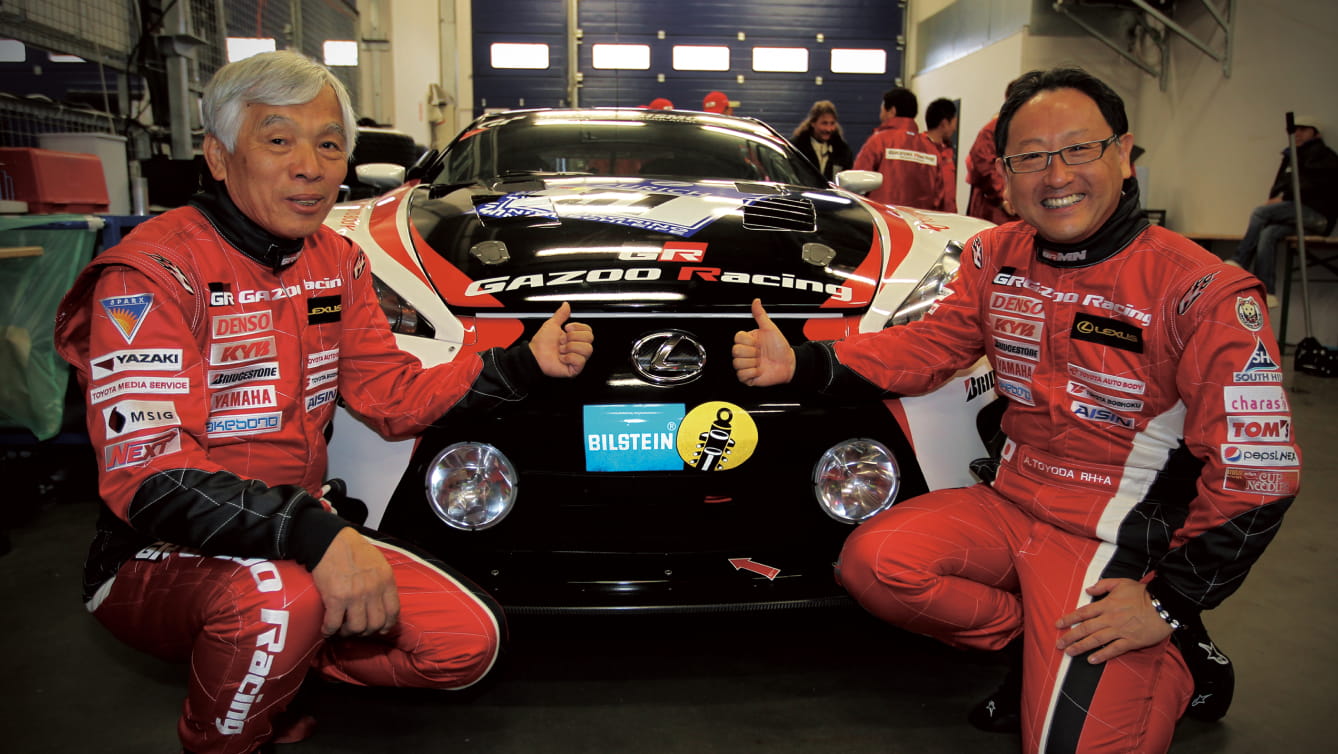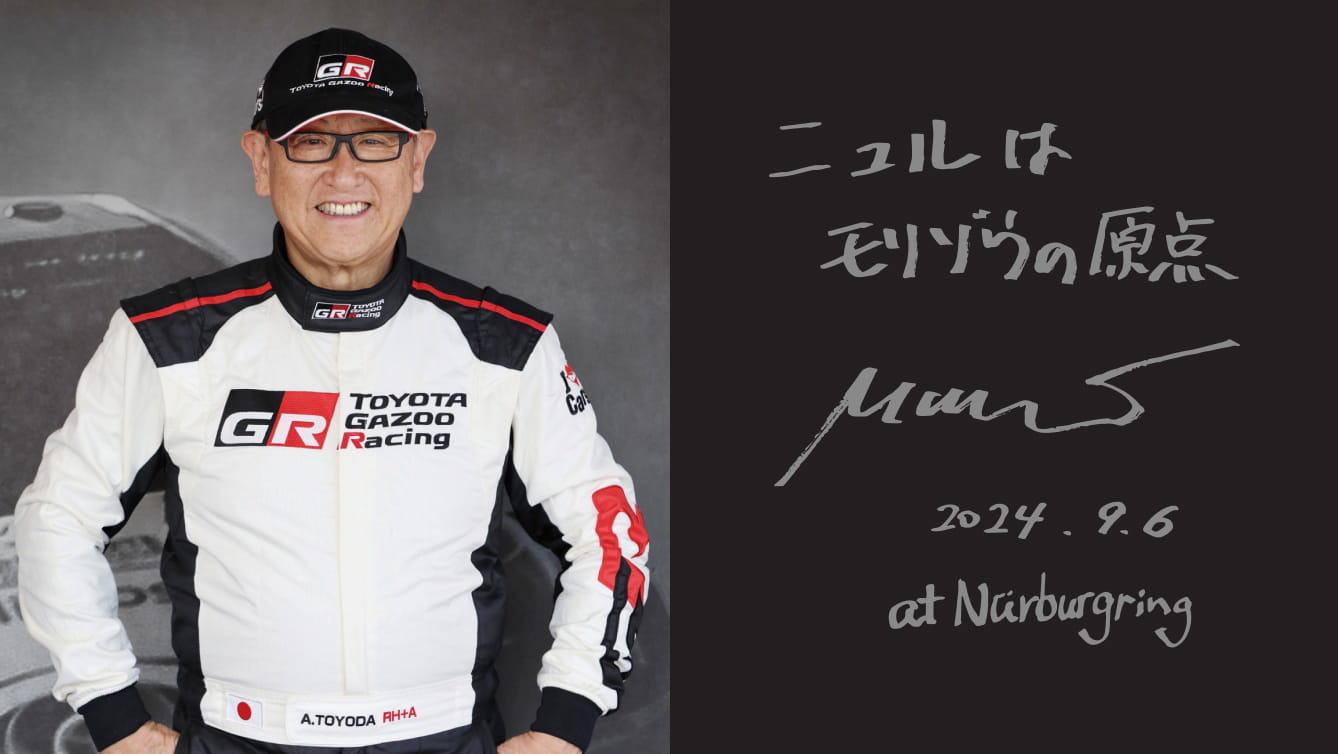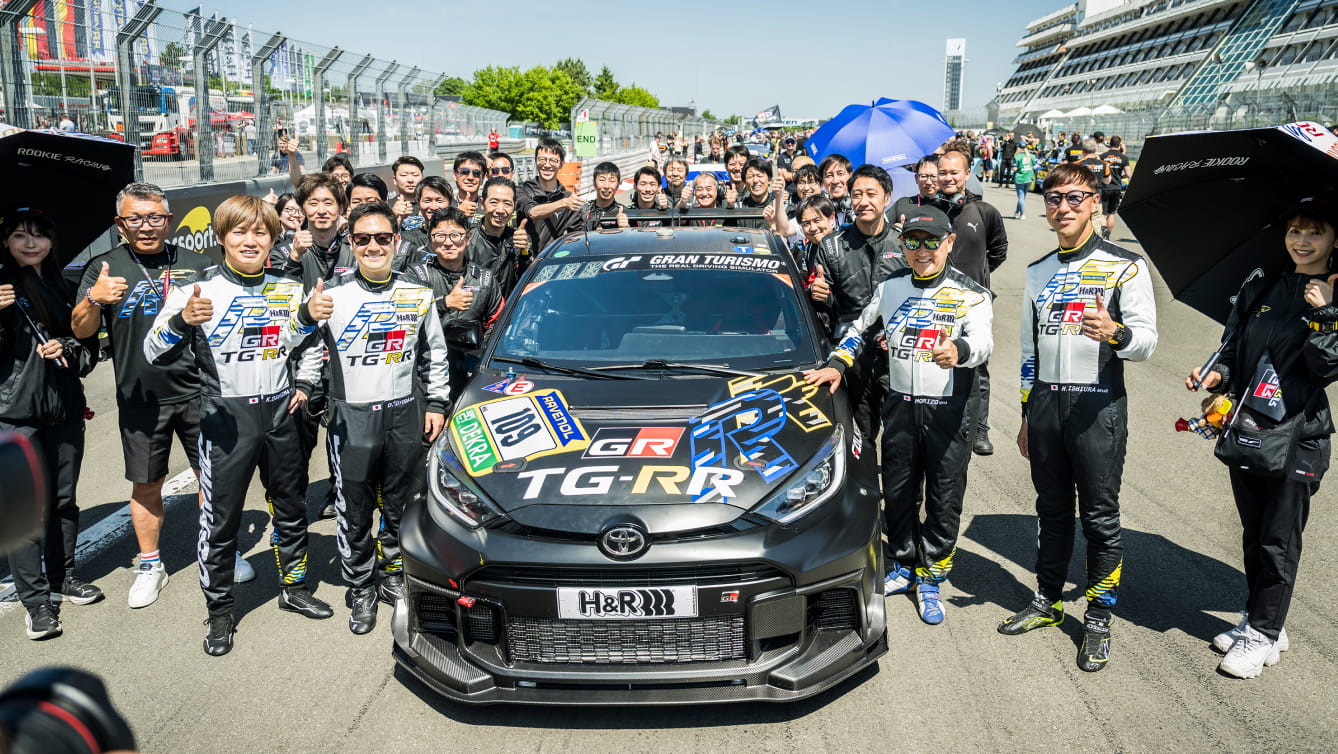2014
GAZOO Racing takes three class wins for the first time ever

The newly developed experimental vehicle, the LFA Code X, was added to the team, while keeping the three vehicle team composition. It was positioned in the same way as the LF-A had been in 2008 and 2009, refining a vehicle that had yet to be launched. The LFA and 86 were updated to provide a high level of balance between speed and ride quality. As a result of these efforts, there were no problems in either the qualifying races or the finals, and the driving of the LFA Code X made it hard to believe that it was the car’s first year in the race. For the first time ever, GAZOO Racing took class wins in every class it competed in. This 86 racing car served as the base for the launch of the 86 GRMN, a limited exclusive.
2015
The team goes back to its starting point, developing the new cars of the future

The LFA and 86 era of racing ended, and this year the team fielded the LFA Code X, which competed for the first time the preceding year, and two Lexus RCs. Using the experience from the previous year, the inside of the LFA Code X was completely overhauled. The Lexus RC had a new powertrain that was not available in production vehicles at the time. Both were positioned as cars being developed for the future, so it was a year of going back to GAZOO Racing’s starting point of making ever-better cars. The LFA CodeX won in its class for the second consecutive year. The RCs ran with almost no problems, despite it being their first years in the race.
2016
The team celebrates a decade of participation, racing under the Toyota name

After a year of participation in the race, the entire team raced under the Toyota name for the first time. The Lexus RC, now in its second year in the race, was evolving steadily, and the addition of the Toyota C-HR, a crossover SUV, generated a lot of buzz. The RC F developed in collaboration with TOM’S, a new initiative for GAZOO, was designed for speed. Each of the three vehicles had its own mission. The RC F and C-HR completed the 24 hour race without any major issues, but the RC experienced major problems late at night, and although the team swapped out the transmission, it ultimately dropped out of the race. This year everyone became keenly aware yet again of what a harsh race Nürburgring is.
2017
Driving for 24 hours straight, without stopping once

In the past few years, the team had competed with multiple vehicles, but in 2017 it focused on a single Lexus RC. Using the frustration from last year’s failure to complete the race as motivation, the team carried out an overhaul so thorough it was almost a complete redesign. It was a neck-and-neck battle with the Subaru WRX STI, the Audi TT RS, and the Hyundai N, other vehicles in the same class. Other than a brush against another car during the night, there were no major problems. In fact, things went so steadily people were saying that it was almost scary. The car drove 24 hours without stopping, except for pit stops, and took 2nd in its class. Last year’s tears of frustration turned into tears of joy in 2017.
2018
Testing next-generation technologies at Nürburgring

The Lexus RC, which had raced in Nürburgring since 2015, ended its run, replaced by the newcomer Lexus LC. While the RC visually resembles the massproduction LC, under the hood it incorporates a number of next-generation technologies that are intended to be used in future production cars. During the qualifying races, it was almost as fast as the SP9 class FIA-GT3 machine, which was aiming for an overall victory, but in the finals it experienced numerous problems, starting with brake problems during the early stages of the race and followed by transmission problems and engine problems. Nürburgring presents new machines with a host of challenges. Although the team suffered a defeat, the race provided it with a range of new experiences and findings.
2019
The resurrection of the Supra and tears of frustration poured for the LC

Reflecting on the lessons learned the previous year, the team completely overhauled the Lexus LC. It was almost a complete redesign. The GR Supra was also brought back for the first time in 17 years. Although the GR Supra had several small issues, it completed the 24 hour race and took 3rd in its class. The LC, on the other hand, struggled with frustrating and unexpected problems, despite being fully prepared to take on the race, having undergone 7,000 km of test driving in Japan and in Nürburgring in preparation. Morizo, who was driving the GR Supra on the second day of the finals, the anniversary of the death of top gun Hiromu Naruse, recalls feeling at the time of Naruse’s death that he was there with him, driving.
2020〜2024
The team continues to race at Nürburgring

In preparation for 2020, the Lexus LC was updated with numerous new technologies that would be used in future sports cars and other commercial vehicles. Although the shakedown in Japan went well, the race was called off due to the COVID-19 pandemic. The 2021 race was also cancelled because of the pandemic. In 2022, the race’s dates overlapped with a race in Japan, so the team could not compete in the 24 Hours, but the Lexus LC and the newly released GR86 did take part in the Nürburgring Long-distance Series (NLS) endurance race. Test driving was performed in 2023. In 2024, the team competed again in the NLS in preparation for their return to the grand stage of the 24 Hours of Nürburgring. The team’s history at Nürburgring is far from over.





